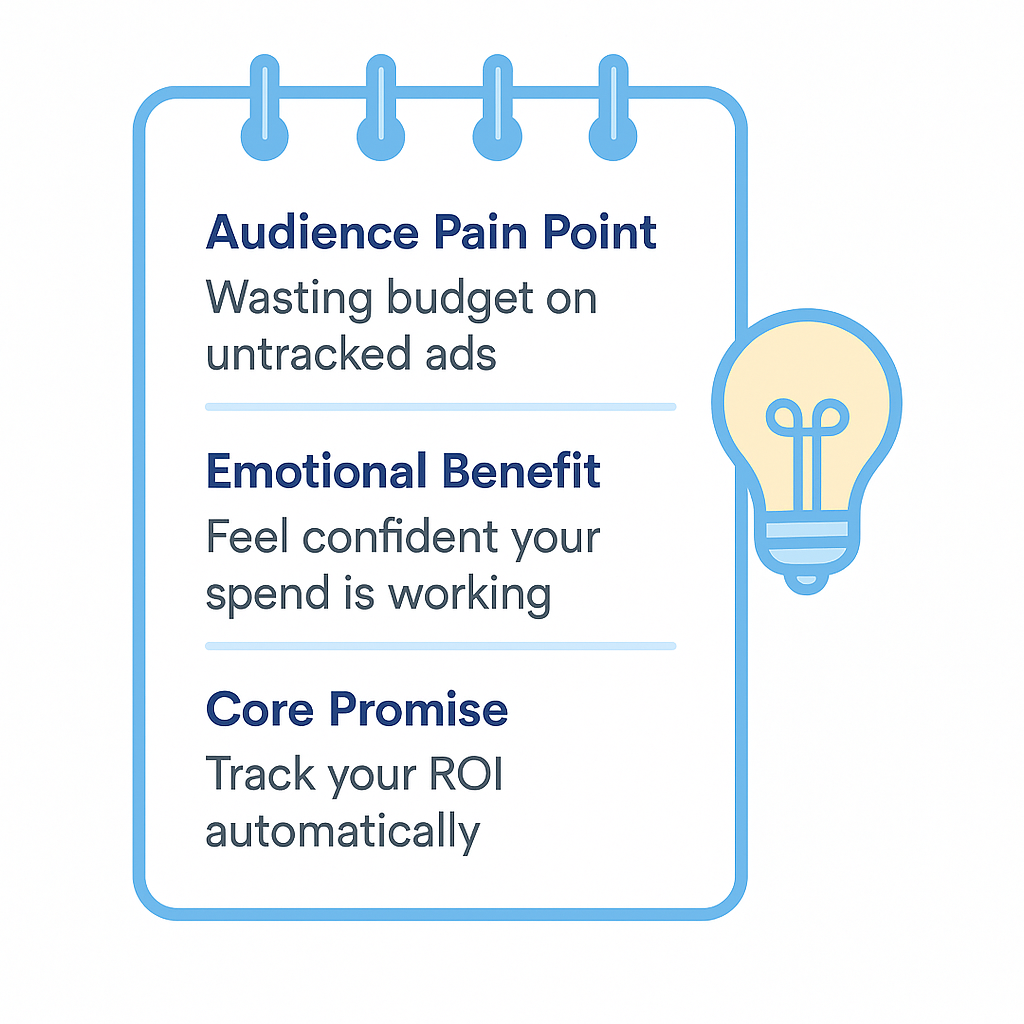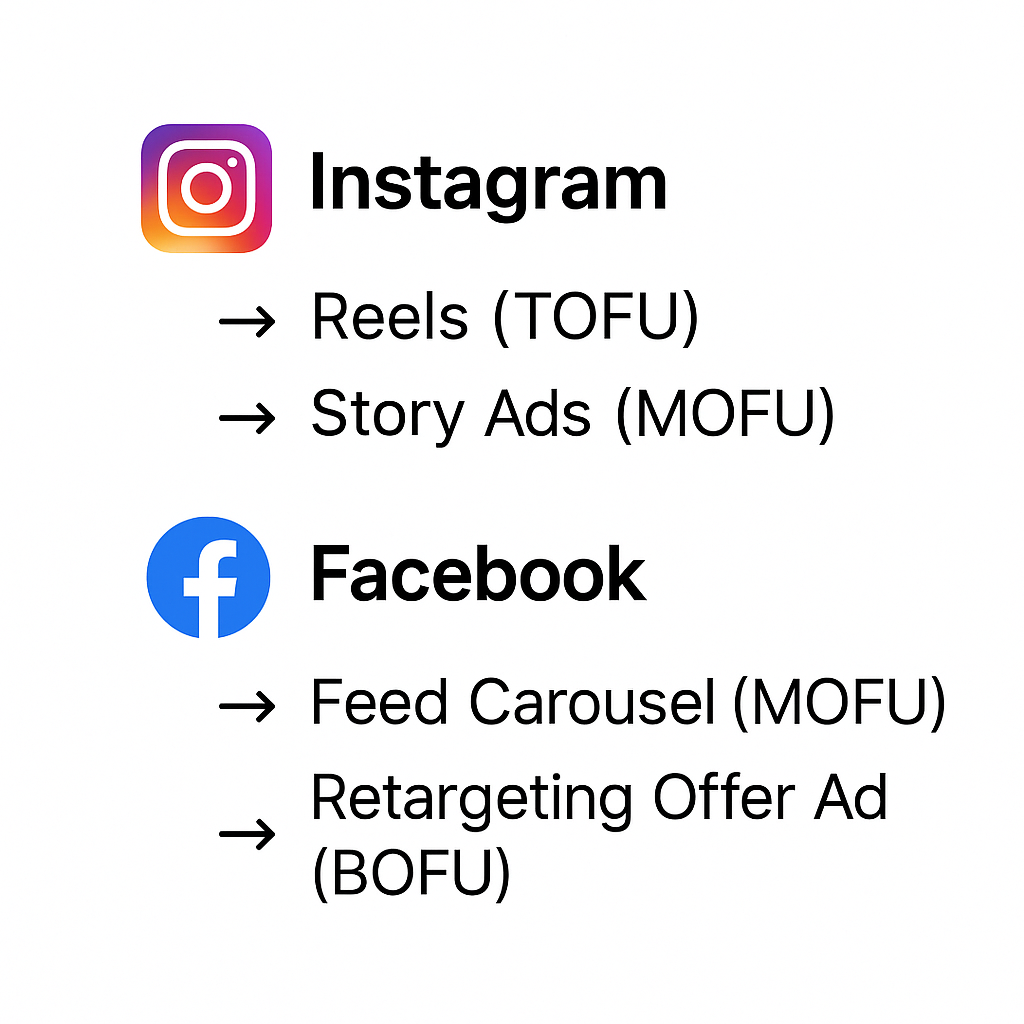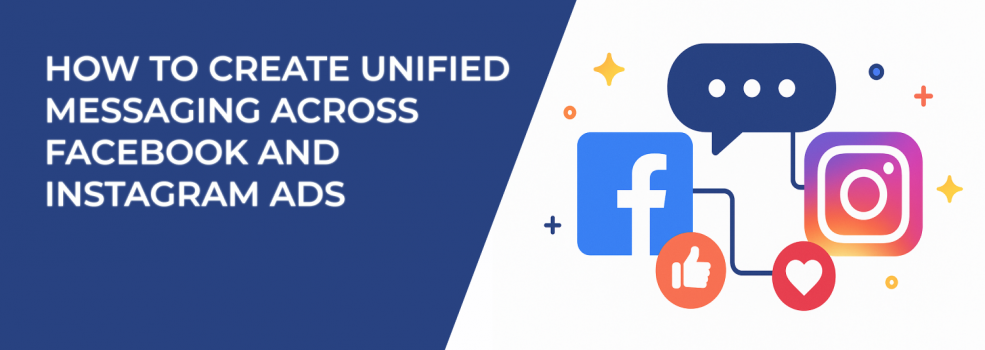If your Facebook and Instagram ads feel disconnected, your audience likely notices too. And when your messaging doesn’t align across platforms, you risk confusing potential customers, diluting your brand voice, and wasting ad spend.
This guide will help you build a strategy for unified messaging across Meta platforms — so your ads work together, not against each other.
Why Unified Messaging Matters
Imagine a user who first sees your Instagram Story ad, then later spots a Facebook carousel. If your visuals, tone, or offers clash between the two, they’ll second-guess your brand. Consistency builds trust. Disjointed messaging does the opposite.
Unified messaging increases recall, strengthens your brand identity, and improves ad performance. It ensures that each ad acts like another step in a conversation — not a random interruption.
Step 1: Lock in Your Core Message
Before writing a single headline or launching a creative brief, define your campaign’s central idea. This is the through-line that guides every asset across both platforms.

Ask yourself:
-
What problem are we solving for our audience?
-
What key benefit or emotional hook are we emphasizing?
-
How do we want people to feel after seeing our ads?
This message should inform everything from your ad copy to your CTA to your visual identity. If you change it mid-funnel, your audience will feel the disconnect.
Need help defining the right audience first? Here’s a step-by-step guide: How to Define a Target Audience for Marketing.
Step 2: Adapt Format, Not the Message
Your core idea stays the same, but your delivery should flex based on the platform and placement.
On Instagram:
-
Reels and Stories are short-form and visual. Use strong motion, minimal text, and emotional tone.
-
Feed ads benefit from quick visuals, bold CTAs, and hashtags.
On Facebook:
-
Feed ads allow longer copy — great for storytelling, testimonials, or deep-dive offers.
-
Audience network placements may strip visuals down. Make sure your message survives even without sound.
A good framework to follow is:
Single message → multiple formats → consistent narrative.
To explore how Instagram content works differently, read: How to Use Instagram Reels in Your Marketing Strategy.
Step 3: Align Copy and Creative Across Placements
Here’s where many campaigns go off the rails. Brands often tweak visuals without checking how they impact message clarity.
To stay consistent:
-
Use a shared visual style. Your colors, typefaces, layout style, and logo placement should feel intentional across all ads.
-
Write copy with brand voice in mind. Whether it’s casual or formal, data-driven or playful — don’t switch tone without reason.
-
Reinforce, don’t repeat. Each ad should build on the last. You don’t need to say the exact same sentence, but the theme should stay steady.
It helps to document your core assets in a campaign sheet or ad library. This minimizes creative drift, especially if you’re testing multiple formats.
Step 4: Sync Funnel Stages Across Channels
Are you using Facebook for retargeting and Instagram for reach? Then your message strategy should reflect those goals. Each touchpoint should move the user forward, not sideways.

Here’s how that might look:
-
Top of Funnel (TOFU) on Instagram: short, curiosity-driven Reels ads with broad audience targeting.
-
Middle of Funnel (MOFU) on Facebook: testimonials, how-it-works posts, and feature breakdowns with custom audiences.
-
Bottom of Funnel (BOFU) on either platform: urgency offers, trust badges, or direct CTAs with time-sensitive language.
For a full breakdown of campaign structures, check out Meta Ad Campaign Objectives Explained.
Step 5: Centralize Campaign Planning and Feedback
To truly unify your messaging, your teams need to be aligned. This includes content creators, media buyers, brand managers, and analysts.
Practical tips:
-
Use a shared campaign brief that includes messaging pillars, creative dos/don’ts, tone of voice, audience insights, and funnel goals.
-
Conduct weekly reviews of active campaigns across platforms to spot inconsistencies or underperformance.
-
Build a feedback loop between data and creative. If Facebook copy is converting but Instagram creatives are flat, the issue may not be the message — it could be format mismatch.
If you’re struggling to diagnose what’s not working in a campaign, read Facebook Ads Not Converting: How To Fix It.
Bonus: Use Tools to Scale Creative Without Breaking Consistency
Don’t rely solely on manual design. AI-powered tools can help scale creatives efficiently while sticking to your message.
Look for tools that can:
-
Generate image variants within your brand guidelines.
-
Dynamically test copy variations.
-
Customize content per placement while keeping core messaging intact.
See what tools top advertisers are using in The Best AI Text and Image Generators.
Final Thoughts: Strong Messaging Wins Attention and Retention
When your ads across Facebook and Instagram speak in one voice, you’re no longer running ads — you’re running a story.
And that’s what consumers remember: not the format, the budget, the message.
So define it, reinforce it, make it flexible enough to adapt, but strong enough to stay clear.
When in doubt, ask: Does this ad fit the same narrative as the rest? If not, it needs editing, not publishing.

